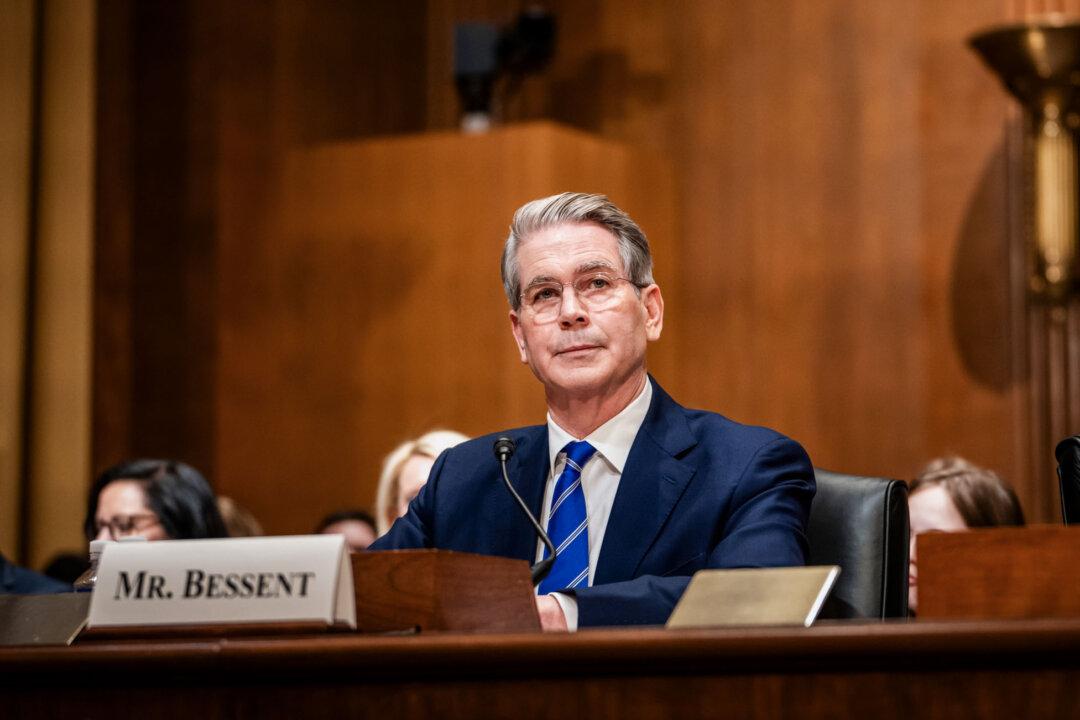Tariffs have featured prominently in recent news cycles.
Since taking office, President Donald Trump has threatened to impose new tariffs on Canada, Mexico, China, and other countries. They are essentially taxes implemented by governments on goods and services imported into the country and paid by importers.
The current administration is using this strategic tool to secure the border, combat drugs, and rectify unfair trade.
While market watchers brace for new trade announcements, economists are analyzing the data to debate whether Trump’s first term of levies ignited inflation and whether new tariffs could rekindle the inflation flame.
A plethora of economists and independent policy organizations have sounded the inflation alarm, warning that Trump’s tariffs will resuscitate inflation pressures.
The Tax Foundation concluded that the president’s trade pursuits could raise costs for businesses and consumers.
The short-term implications could be higher prices and rising unemployment, York says, but the long-run challenge of tariffs “involves lower incomes and production.”
The Specter of Smoot-Hawley
“The evidence is still that tariffs are inflationary, especially if it is just across the board,” Sunderesh Heragu, a researcher and educator at Oklahoma State University, told The Epoch Times.Heragu and his industry colleagues regularly refer to the Smoot-Hawley Tariff Act of 1930, which raised levies on more than 20,000 imported products. Many economists agree that this policy transitioned the United States economy from a recession to the Great Depression by increasing living costs, triggering retaliatory tariffs, and reducing competition.
“There was a huge, 60 percent decline in global trade, and many say that it was one of the causes, maybe the primary cause, of a Great Depression,” Heragu noted.
Despite Trump’s implementation of tariffs in his first term, the United States did not witness comparable inflation levels.
However, according to Heragu, tariffs can have a lag effect, meaning that their impact can take time to appear in the data, particularly when other circumstances arise.
Soon after the levies were instituted during Trump’s first term, the global pandemic arrived, shutting down global markets and supply chains. The worldwide economies also endured labor strife and work-from-home policies.
What Happened the First Time
Over the years, analysts have presented different takes on the history of Trump’s tariffs.The Trump administration approved exemptions on thousands of products based on companies’ arguments that tariffs could cause immense harm or that foreign goods are unavailable in the U.S. marketplace, research showed.
Additionally, according to Jeffrey Roach, chief economist at LPL Financial, producer prices were far more affected than consumer prices “as wholesalers did not fully pass along the cost of importing.”
The producer price index—a measure of prices paid for goods and services by businesses—ranged between 3 percent and 5.5 percent in 2017 and 2018 before plummeting to below 0 percent for much of 2019.
Even after companies adjusted for the U.S.–China trade war, consumer prices “surprisingly decelerated down” to below 2 percent in late 2019, he said.
Indeed, data have highlighted how Trump’s first set of targeted tariffs lifted prices for specific products rather than in the aggregate.
“Using the level of shipments to construct an aggregate, we calculate that these tariffs resulted in increased costs to consumers of just over 1.5 billion USD on an annual basis,” the paper said. By comparison, the total amount of tariff revenue collected was relatively small, aggregating to about 82 million USD annually.”
However, the paper noted, foreign countries’ tit-for-tat response “by contrast had clear negative employment impacts, particularly in agriculture.”
Meanwhile, economist EJ Antoni, a public finance economist at the Heritage Foundation, says that tariffs, by definition, are not inflationary.
“If a tariff increases the price of a product, consumers have less money to spend on something else,” Antoni told The Epoch Times. “That reduction in demand will put downward pressure on other prices, resulting in no net change for the average price level.
Bracing for Impact
Should foreign countries engage in retaliatory tariffs, the dispute would not last long because of the weakened economic state of America’s trading partners, Antoni said.GDP growth rates in Canada and Europe have been anemic, and Mexico’s growth figures are poised to reflect a contraction in the fourth quarter.
This leaves the U.S. economy with an advantage, Antoni said.
“Simultaneously, the American economy will end up producing more with higher levels of employment, along with faster real wage growth,” he said. “Trump is setting up the American worker to win, no matter what his foreign counterparts do.”
The other aspect is that China could export a bout of deflation, according to Treasury Secretary Scott Bessent.
The world’s second-largest economy is struggling to grow, and the Chinese manufacturing base is attempting to expand. This has left Beijing vulnerable, which could help Trump gain leverage on China and help alleviate consumer prices.
“China is the most unbalanced economy in the world,” Bessent said at his Jan. 16 confirmation hearing. “They are in a severe recession and depression, and they are attempting to export their way out of that.”
Though the tariff situation has been volatile, U.S. businesses have been given ample warning of levies and potential trade spats.
So, how can companies prepare?
“The real key thing is to identify what I call the ‘kickers and killers,’” Rebecca Homkes, a lecturer at the London Business School, told The Epoch Times.
Organizations will need to assess if tariffs can break business models or determine if they can disadvantage others within the supply chain.
“I think the first thing is to be really clear on your strategic belief that you’re building your preparation around your kickers and killers, and then if you do have a killer, you do need to start moving, even though they’re not officially announced,” Homkes stated.
Whether a strategy will involve passing costs onto the consumer remains to be seen. She noted that some of the major players might see their margins hit, and other manufacturers or retailers might try to pass the added costs onto their customers.
“So, we are going to see some different needs and different choices being made,” Homkes said.
The five-year outlook rose to 3.3 percent, the highest since May 2008.
The acceleration was fueled primarily by concerns over the negative effects of tariff policy.
“Many consumers appear worried that high inflation will return within the next year,” Joanne Hsu, the university’s director of consumer surveys, said in a statement.







